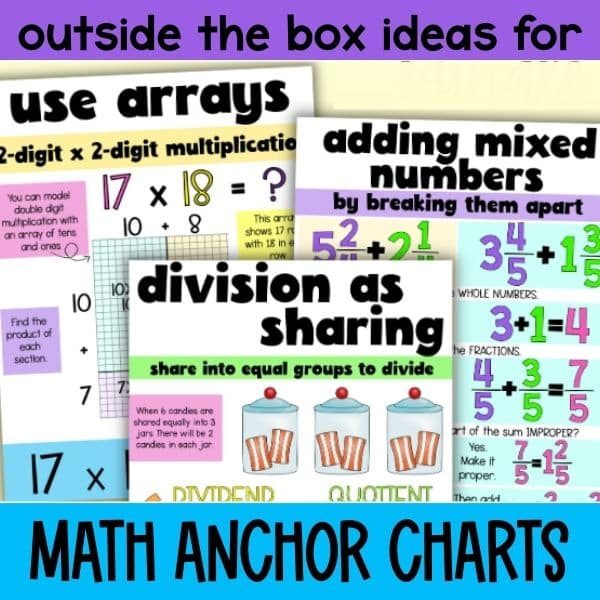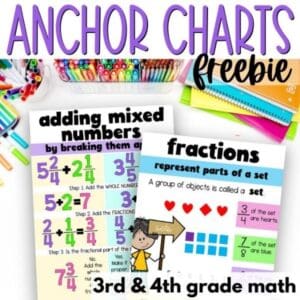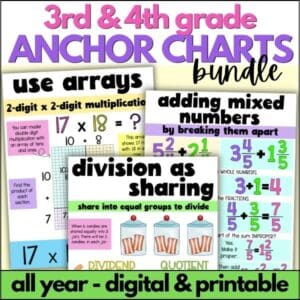These math anchor chart ideas will have you treasuring your anchor charts for more than just colorful classroom decorations – they’re powerful tools that can transform the way students engage with math concepts. From introducing new ideas to reinforcing skills and providing valuable references, anchor charts are a must-have in any math teacher’s toolkit. Let’s explore five fresh and innovative math anchor chart ideas to make the most out of these tools in your classroom:
Launching New Concepts:
(Okay, so this first one is a new and creative use….but we don’t want to overlook the obvious either.) When diving into a new math topic, kickstart the learning process by presenting an anchor chart to your students.
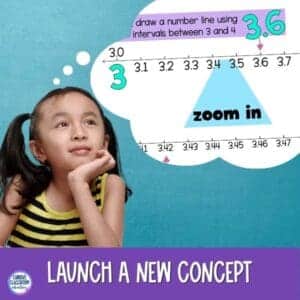
Whether it’s long division or fractions, having a visual guide outlining key steps and examples can set students on the right path from the get-go. Make the learning process seamless by encouraging students to refer back to the anchor chart whenever they need guidance.
Pro Tip: If you’re using a pre-made math anchor chart from a PDF (such as the ones in this free sample), consider printing it as a larger poster to make it more visible and impactful in your classroom.
Reinforcing Skills Through Practice:
Take your math anchor charts beyond the realm of decoration by integrating them into math stations. Print standard-sized copies and pair them with corresponding math task cards. As students tackle problems, they can refer to the anchor charts for support, reinforcing their understanding of the skill while applying it in context.
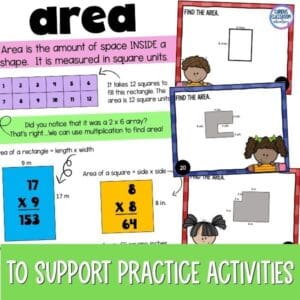
Interactive Review Sessions:
Next on the list of outside-the-box math anchor chart ideas take your charts from paper to digital! Transform review sessions into engaging activities by leveraging oversized anchor charts as part of your end-of-unit or standardized test review. Display the chart on the board, strategically covering up keywords or information. Encourage collaborative learning as students work together to fill in the missing details. For students needing extra practice, empower them to create their own anchor charts, deepening their understanding through visual reinforcement (aka anchors).
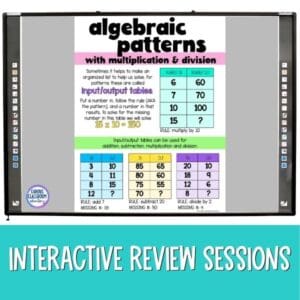
Concept Walls for Visual Learning:
Transform your classroom bulletin board into a dynamic concept wall by showcasing a collection of math anchor charts centered around a specific topic, such as fractions or geometry. This visual display serves as a constant reminder for students, reinforcing connections between related skills and concepts.
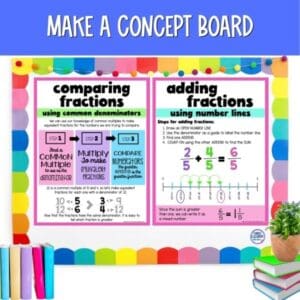
Extend Learning Beyond the Classroom:
What would a list of outside the box math anchor chart ideas be, if it only considered inside the classroom uses? Help kids’ parents out with tools for success as they help with math at home. Because, let’s face it, how many times have you heard a parent refer to it as “this new math”? They might need a little reteaching of their own unless you want them passing on some of those bad habits from decades gone by.
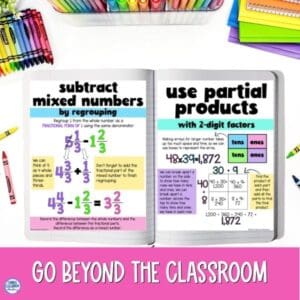
To do this, print the math anchor charts at a reduced size and encourage parents to use them as reference guides during homework sessions. Setting your printer to “2 pages per sheet” ensures the charts fit perfectly into composition notebooks, creating a handy resource for at-home practice.
Math Anchor charts are my #1 must have tool! I use them multiple times a day, but I am always looking for more. Let me know if you have any math anchor chart ideas that I haven’t thought of yet!
If your looking for printable anchor charts like the ones in this post you can find them in the Curious Classroom Adventures shop or in my TPT store.

